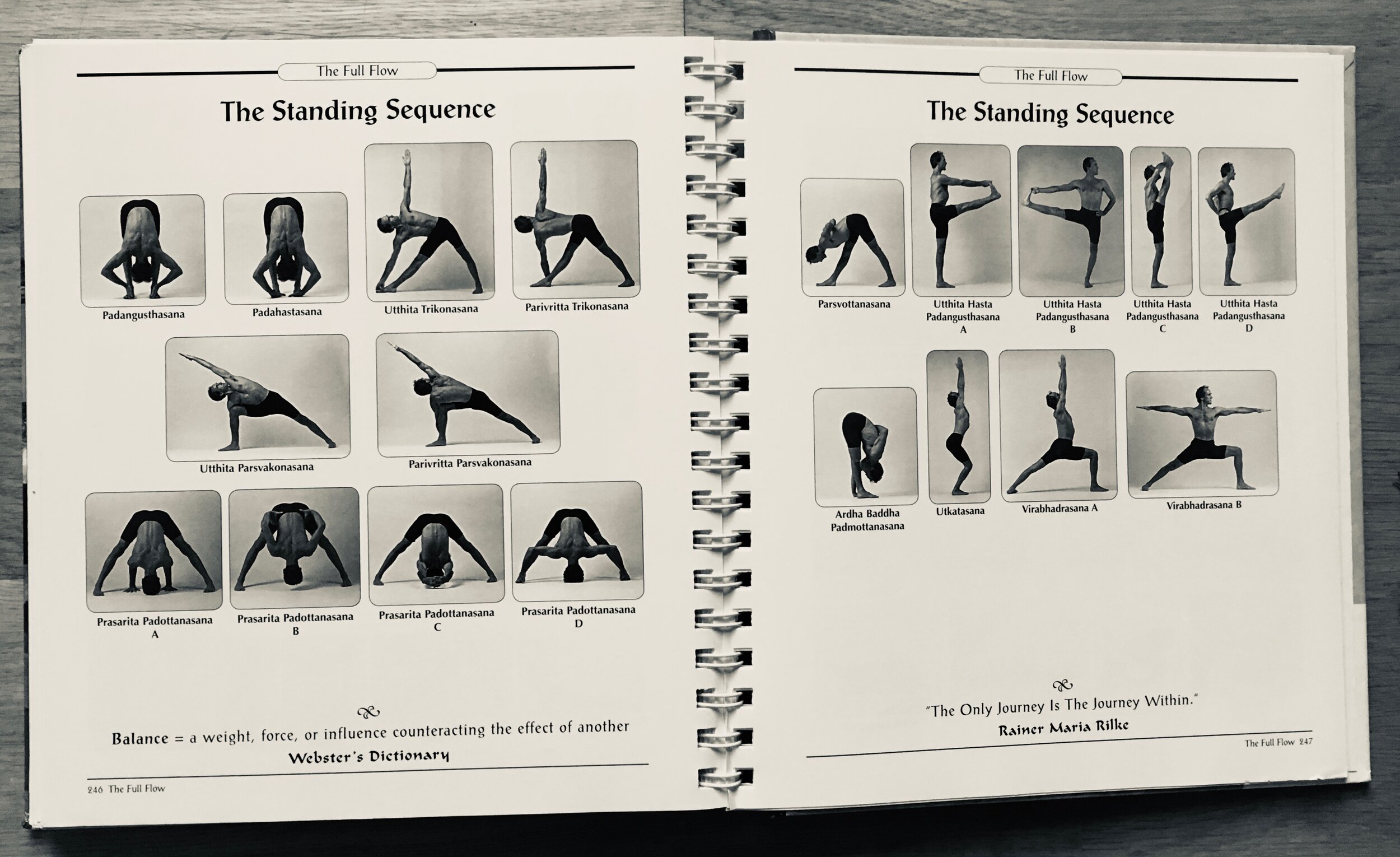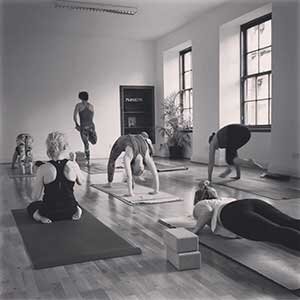My Top 3 Tips for Learning the Ashtanga Yoga Sequence
The number one reason students give me for not coming along to Mysore style Ashtanga yoga class is:
“I don’t know the sequence!”
And I completely understand.
It took my good friend Allison Dearling of Live & Breath Yoga more than a year (possibly nearer two!!) to persuade me to join her for a Mysore style class. I was convinced I’d never remember the sequence and, oh my god, what if I forgot a posture???
My first experience of Mysore style practice was a five day intensive with none other than MCY favourite David Keil of Yoganatomy fame. Talk about jumping in at the deep end!
I had my cheat sheet prepared but of course he wouldn’t let me use it. And of course I got stuck.
I looked at Allison. Fortunately she was on the mat beside me. Unfortunately she couldn’t help.
So I sat there desperately trying to remember which posture came next. David came over, checked I was okay, didn’t crack a light about what came next and left me to sweat…
After what felt like a good 10 minutes but was probably only one or two I managed to calm down enough to think things through and figure out where I’d got to and what came next!
That’s definitely not the last time I forgot or got muddled either!
Here’s how I went about learning the sequence:
1) Think about the postures in sets & pairs
You don’t have to remember all of the postures in one go!
The postures are generally arranged in sets or pairs. For example, the standing sequence starts with a pair of standing forward bends, Padangustasana and Padhastasana, which are variations on a theme. As are the four wide leg forward bends Prasarita Padotanasana A, B, C & D.
Janu Sirsana A, B & C in the seated sequence develop a theme or themes as you move through them.
Sometimes a pair of postures can be a posture & counter/complementary posture, for example, Utthita Trikonasa and its rotated version Parivritta Trikonasa. Or sometimes just have something in common, for example, Utthita Hasta Padangustasana and Ardha Badha Padmottanasana in the standing sequence are both one legged balances.
Breaking the sequence down into bite sized chunks and learning it a little bit at a time makes it all much more achievable.
2) Write down the names of the postures
Long hand. Don’t copy and paste.
There’s something about the time it takes to write down the posture names that helped me remember better. It meant I not only had the names but had the process of writing them down and how they looked written on my piece of paper to help me remember the order they came in.
My actual notes – a bit dog-eared now!
I carried my hand written sheets around with me for a long time. Even when I didn’t need them by my mat I knew they were there in my bag, just in case!
3) Practice. Repeat. Practice. Repeat.
The more familiar you become with each posture the more the sequence will make sense. The only way to remember the sequence is to keep trying and making mistakes sometimes.
It’s like being a passenger while someone else drives somewhere many times and then you try and drive there yourself. You think you’ve been paying attention and you can see some landmarks that look familiar, but the route’s less familiar to you than you thought. After a couple of wrong turns and a few scenic detours though you build a picture of the route in your own head and before long can navigate it like a pro.
Learning the Ashtanga sequence is the same. After a few false starts and a wrong turn here and there you’ll build your experience of navigating yourself through the sequence and feel more confident practicing within a group who are all navigating themselves.
And Rose Ann and I are here to help. When you’re in class with us and you get stuck, just come to the front of your mat and wait. We’ll notice you’ve not moved for a bit and come over!
The cover photo for this post is a pic of the Ashtanga Primary Series sequence pages from David Swenson’s Practice Manual. This book is a fantastic resource and you should BUY IT!
The pic of Padangustasana and Padhastasana is taken from John Scott’s hand drawn illustration of the Ashtanga Primary Series sequence and you can DOWNLOAD A COPY HERE.
What’s a Mysore style practice?
Mysore style class (assisted self practice) is the most effective way of making progress in your yoga practice. We’re all different and what’s best for another student may not work for you. In this class, when we give you advice or instruction it’s completely tailored to your body and your practice. As you develop strength, stamina, flexibility and focus we’ll help you move onto more challenging postures safely.
You’ll find Rose Ann’s Morning Mysore style classes 6-8am Tuesday to Friday and 11am-1pm every Saturday. We ask for Morning Mysore class you’re familiar with Ashtanga style Surya Namaskar A & B and the standing sequence of postures.
I have Evening Mysore style classes Monday & Thursday 5.30-7.30pm. Complete beginners are invited to join us for Monday Evening class.
Judi x
PS If you’ve found this post of interest please share as other people you know may find it interesting too…




